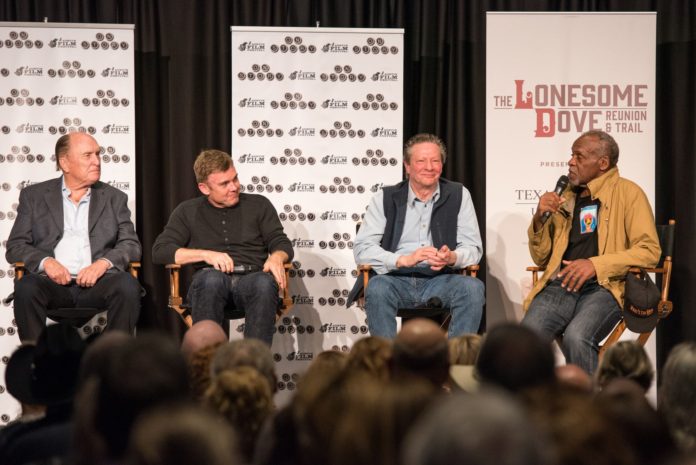Lonesome Dove Reunion & Trail
http://lonesomedovereunion.com
It was 1989 and – after the mostly faux-Texas hoopla of Urban Cowboy and Dallas – oil prices were down, the Texas Rangers were entertainingly awful and Westerns were viewed as passé.
So what were the chances another idea that seemed passé – the television miniseries – could combine with a Western and come up with gold, in the form of Emmys and Golden Globes?
That Western miniseries – Lonesome Dove – took Texas and the Western out of the kitsch and brought some real drama based loosely on real people and events from our history.
The Lonesome Dove crew – the cast and behind-the-scenes players – were here in Fort Worth last week as part of the Lonesome Dove Celebration to benefit the Wittliff Collection, founded by the miniseries’ screenwriter and producer Bill Wittliff and housed at Texas State University in San Marcos.
How did a miniseries from 27 years ago get such a following? Hard to pin that one down, but to judge by the intense interest of the crowds at the panel discussions, Lonesome Dove could tip over into the definition of a religious cult with a communion of whiskey and a pope sporting a Stetson.
So how did this series even happen? A chance meeting between Lonesome Dove novelist Larry McMurtry and Lady Sings the Blues screenwriter Suzanne de Passé. De Passé, then leading the film division at Motown, optioned the novel through McMurtry’s agent, the aptly named “Swifty” Lazar, for $50,000. The joke, everyone thought, was on her, as no one else wanted the property. Westerns, as I said, were as out as go-go boots.
Then the novel scored a Pulitzer Prize and de Passé was a genius.
Robert Duvall, as anyone who has seen the film knows, was key. But he was originally approached to play Call, not Gus.
Thank Duvall’s ex-wife for that. “She told me ‘Bobby I just read a book, it’s maybe better than Dostoyevsky,” Duvall said during one of the panel discussions. “’Whatever you do, don’t let them talk you into playing [Woodrow F.] Call. Gus is the part you should play.’ I never got to properly thank her for that.”
They played some scenes from the series during the panel discussions, proof, if you needed it, that Lonesome Dove holds up. One was a scene where Gus and Call, played by Tommy Lee Jones, enter a saloon and are treated with no respect by the bartender. Gus breaks the bartender’s nose and then points to a photograph of Gus and Call when they were young Texas Rangers.
Gus says: “If you care to turn around, you will see what we looked like when we was younger and the people around here wanted to make us senators. What we didn’t put up with back then was dawdlin’ service, and as you can see, we still don’t put up with it.”
It’s a tour de force of acting by Duvall, with every gesture reinforcing the character of Gus.
De Passé asked Duvall where he got those gestures.
Slingin’ Sammy Baugh, Duvall replied, sitting in an auditorium at Baugh’s own Texas Christian University. That’s right – Duvall said he used to visit Baugh on his ranch in West Texas and he noticed some of Baugh’s mannerisms. “It seemed a little like a Texas Ranger,” Duvall said.
Even though, as Gus says: “Yesterday’s gone, we can’t get it back,” if you missed these and other events related to Lonesome Dove, many of the events were videotaped, so watch for them to show up before long.
http://lonesomedovereunion.com/






